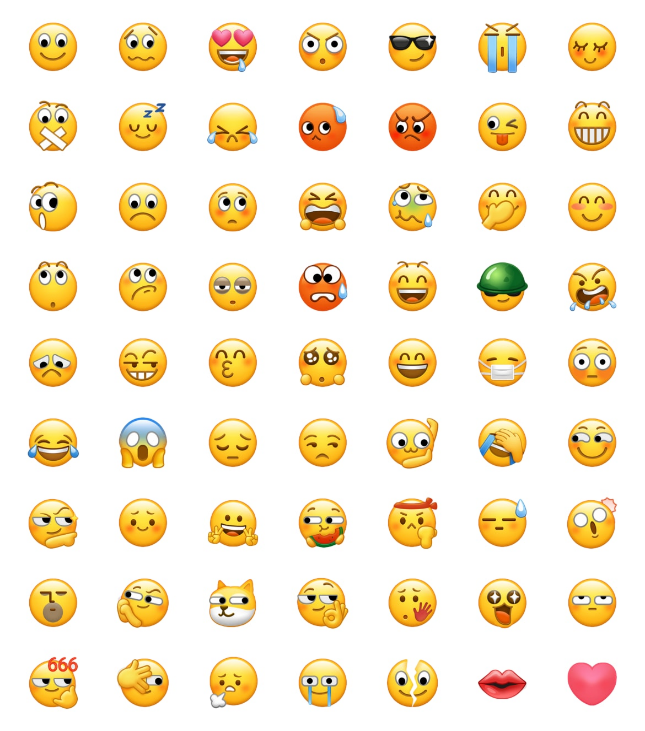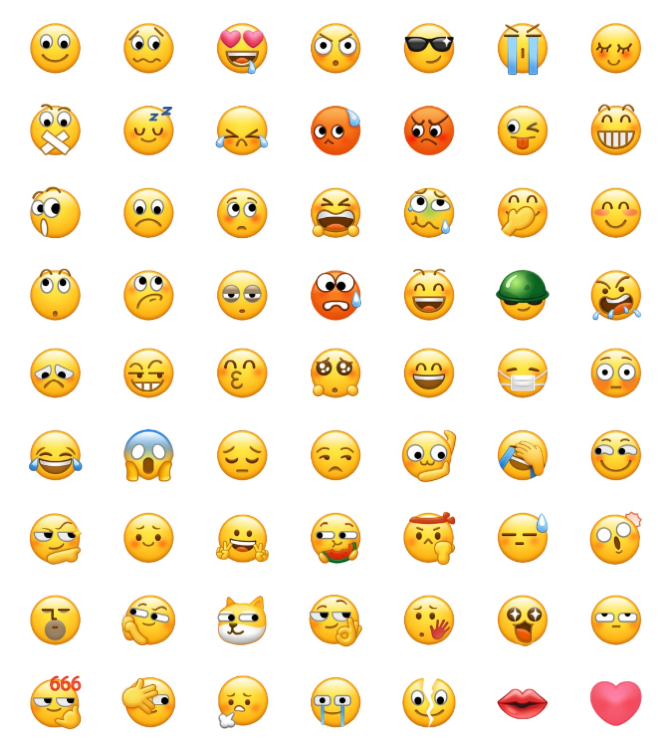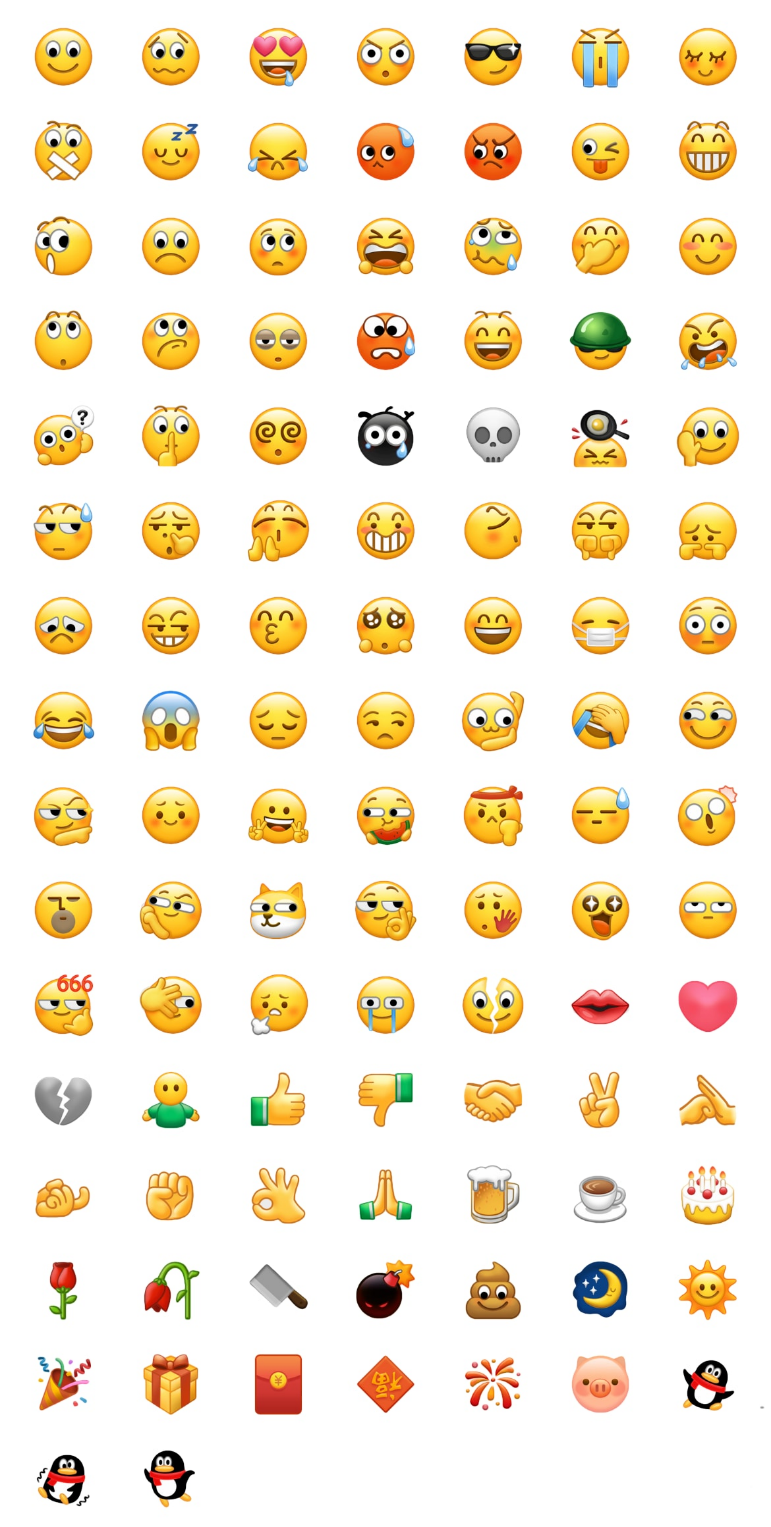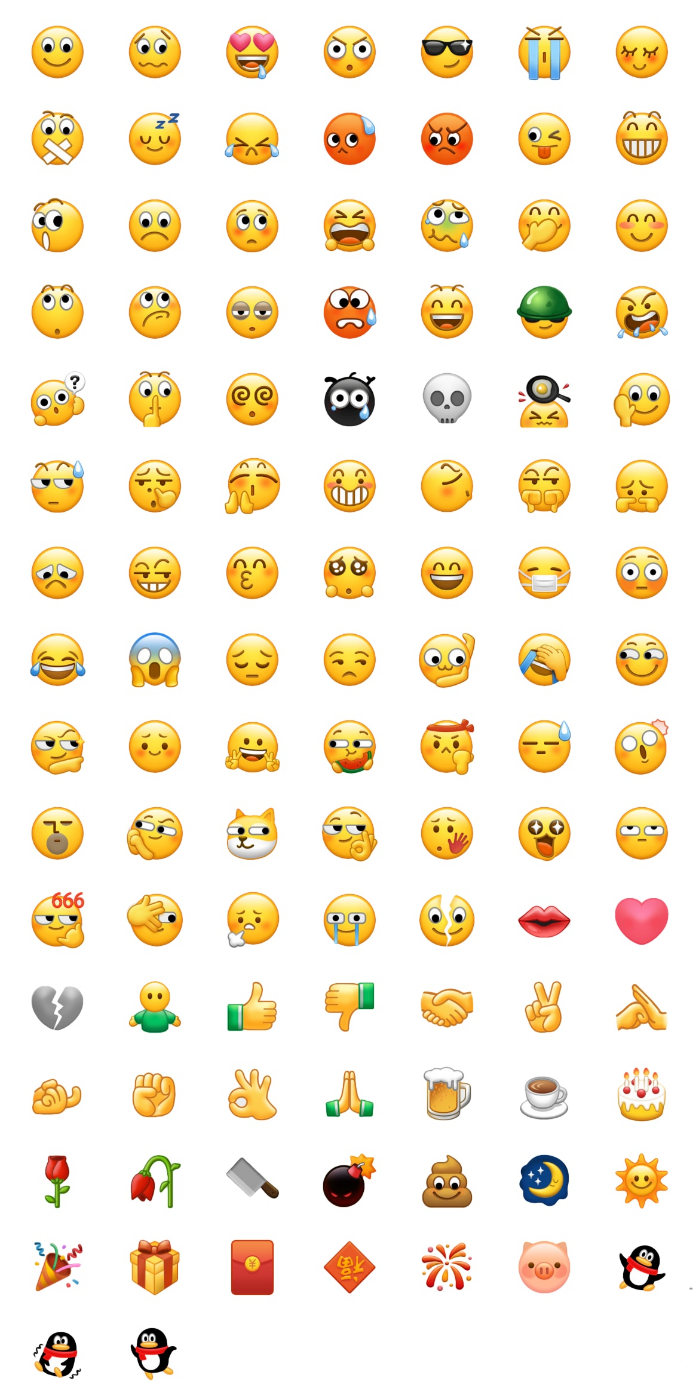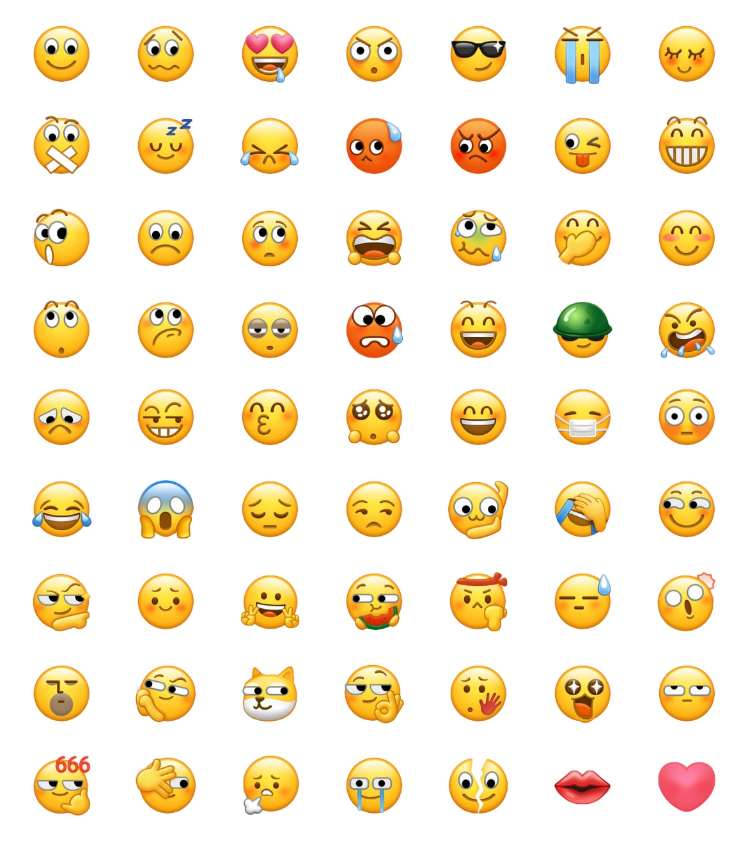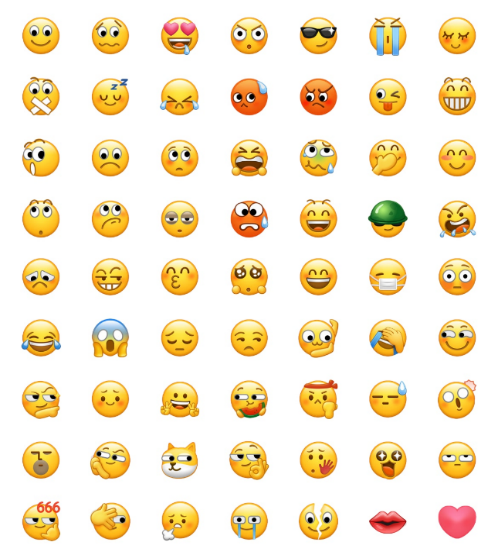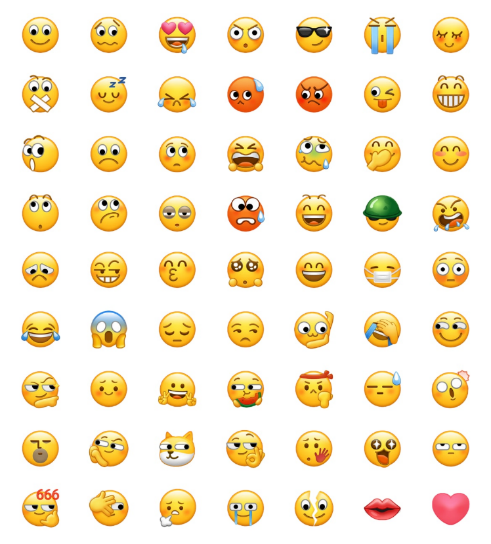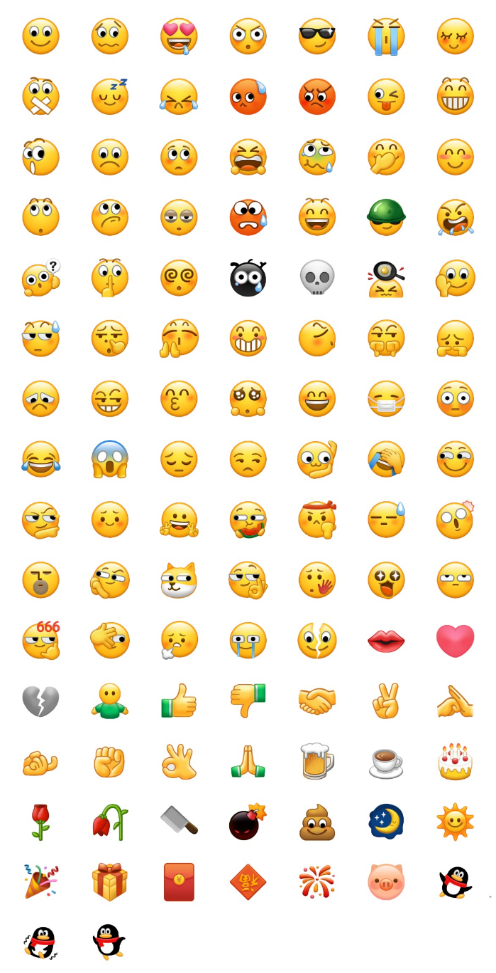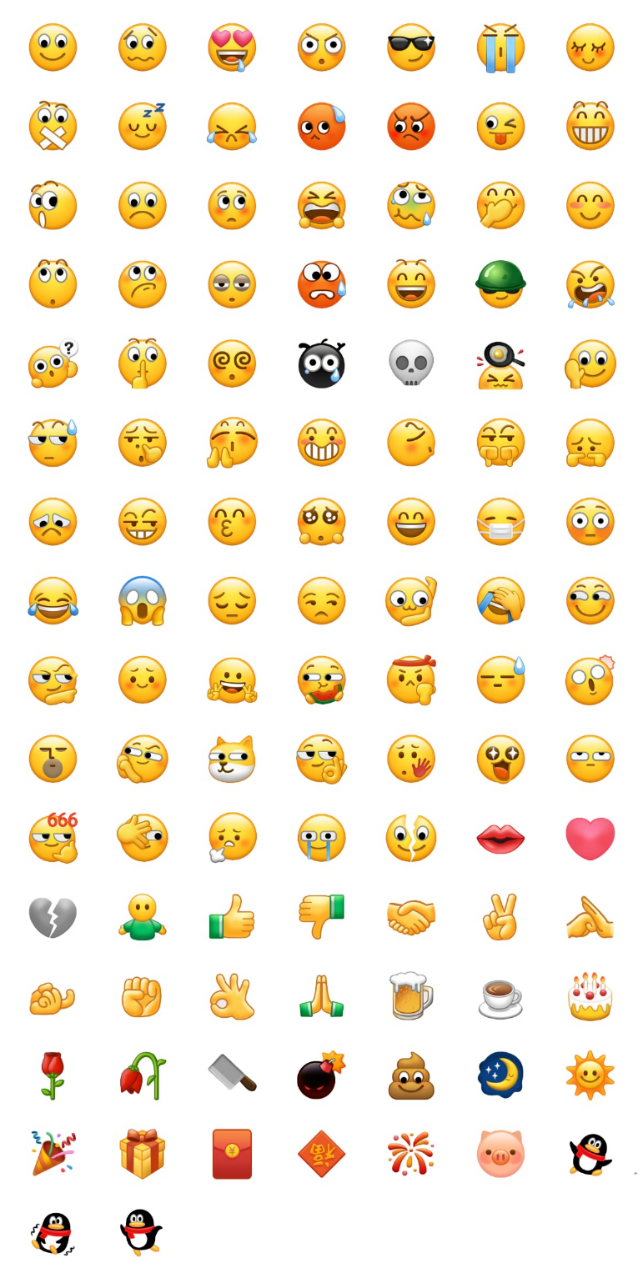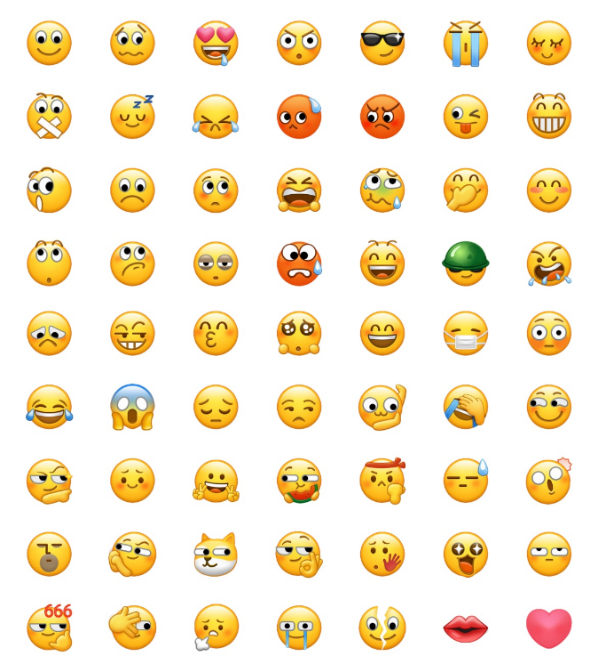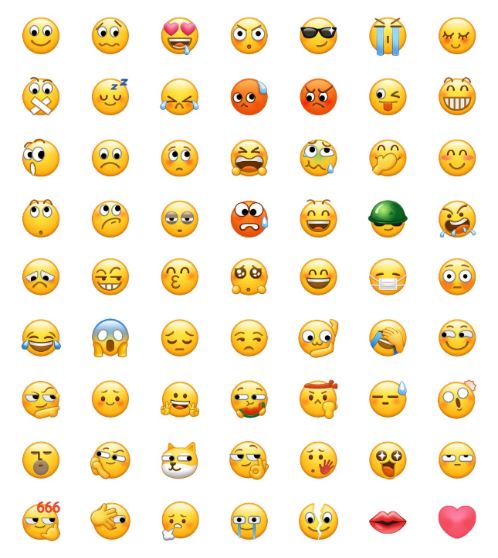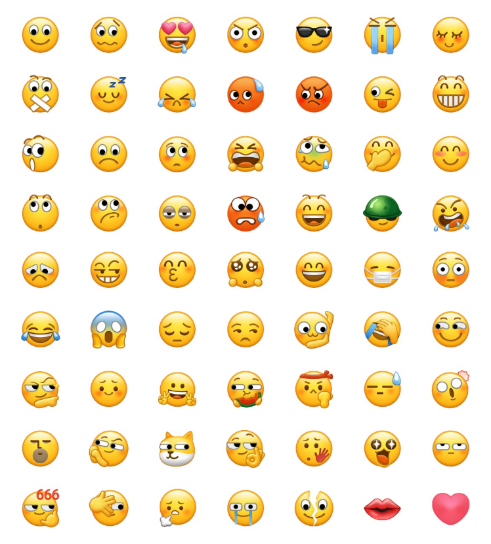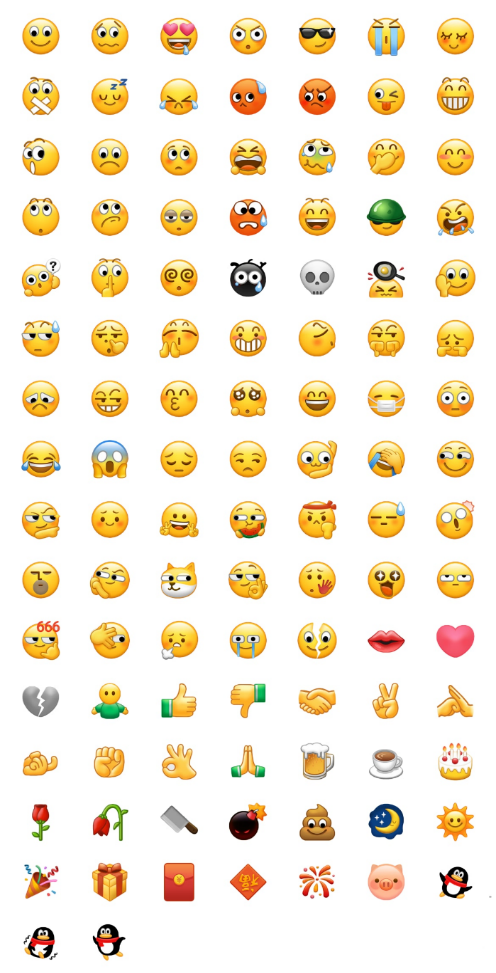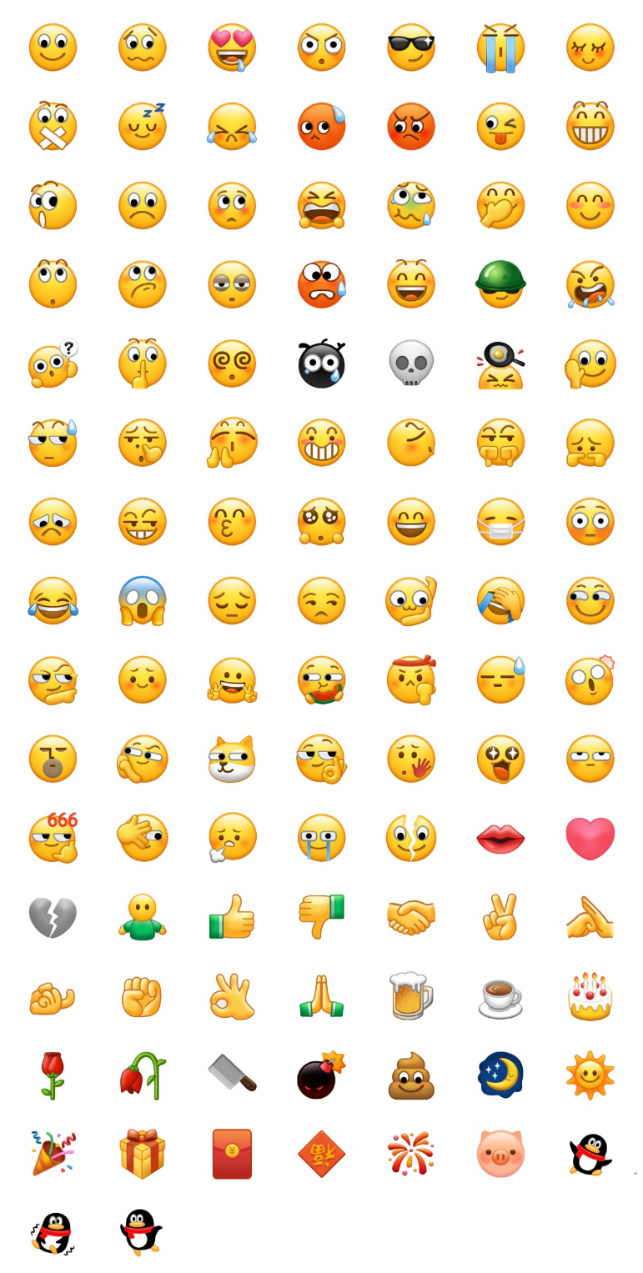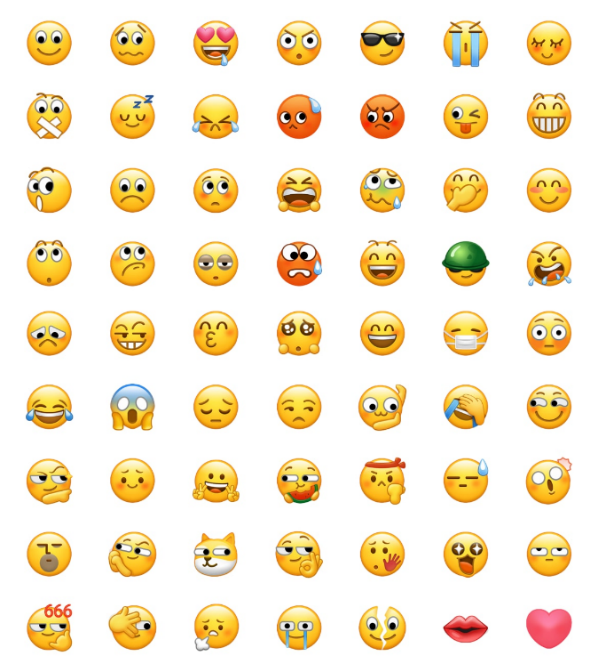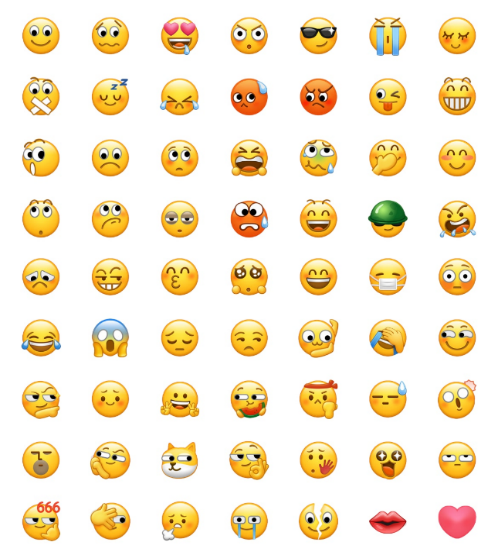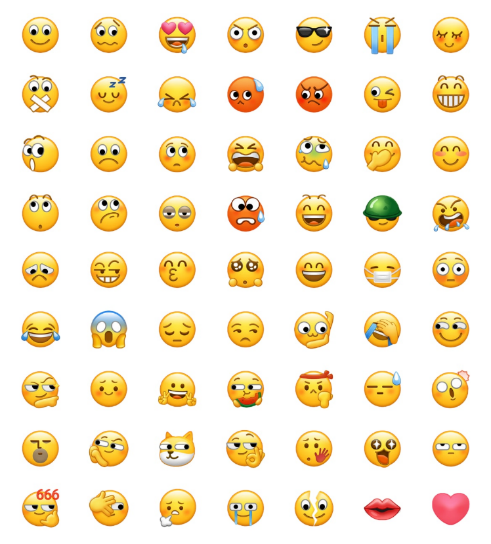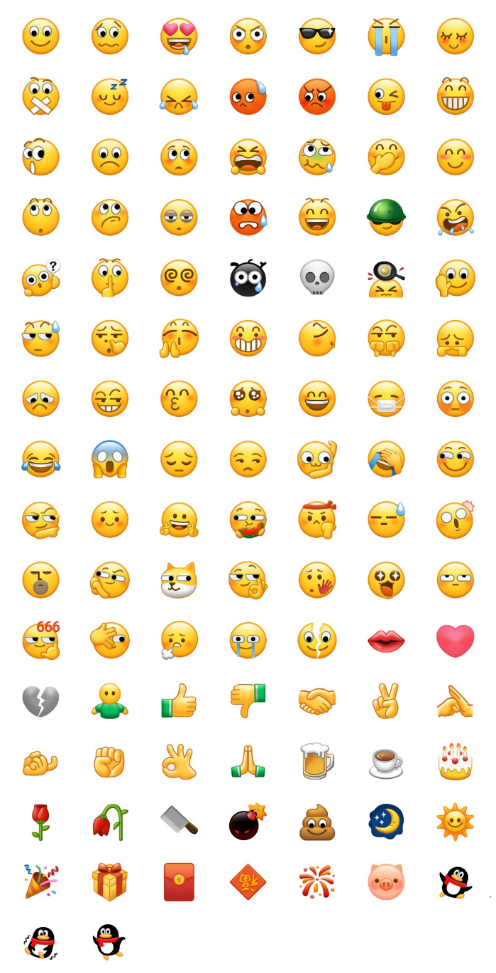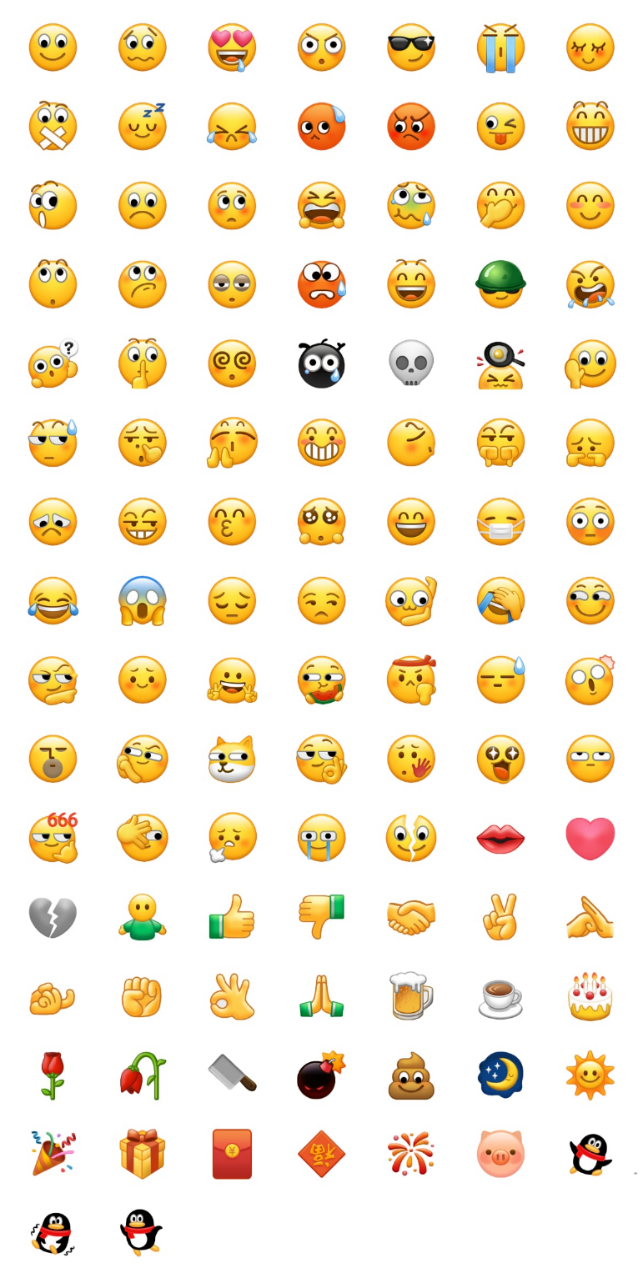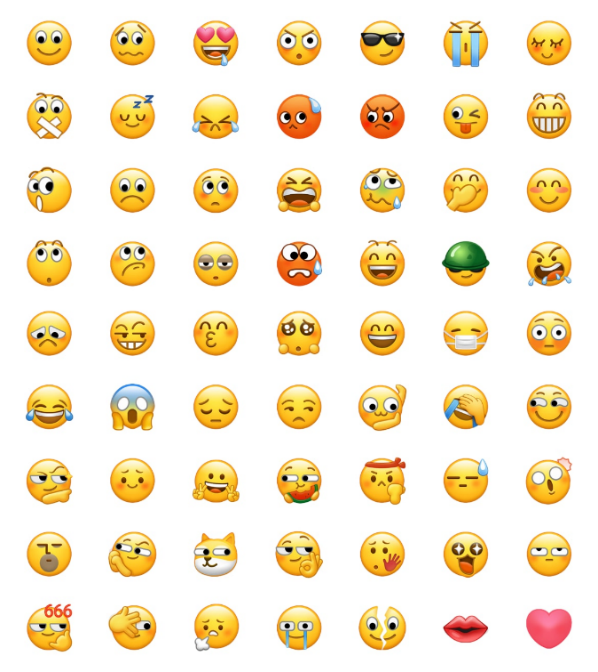1. Introduction
Emojis are significant in online communication, providing conversational cues in a computer-mediated communication process that has certain lexical characteristics. Such lexical features have been demonstrated in previous studies through a variety of circumstantial evidence, but exactly what kind of conversational cues emoji can provide has not been discussed in full [1-3].
The provision of conversational cues by Emoji presupposes that both parties to the communication interpret emoji in a similar way, otherwise a degree of misunderstanding will develop.
However, emoji is not a universal language. We can find that differences in the understanding of emoji are actually common in our lives. Studies have shown that even within the same cultural context, there is often disagreement in the interpretation of emoji by users. This has been attributed to several factors, including the way emoji are presented on different platforms, inherent ambiguity of form, individual differences and so on [3,4].
Little consideration has generally been given to the potential explanatory factors of demographics for the causes of differences in emoji understanding, particularly the different understanding of emoji due to age and generational differences. Whereas people of different ages and generations have well-documented differences in the use of emoji, the question arises as to whether social media users of different ages have different understandings of emoji use, and if so, to what extent.
2. Previous Work
To date, despite numerous reports of age differences in emoji use, the demographics of recipients have received little attention in studies of either semantic or pragmatic interpretation, and if any have revolved more around gender differences. For example, women are more frequent users than men, have more positive attitudes, and so on [5,6].
Reports examining the impact of age on emoji use have also started mainly through frequency of use. In a large-scale analysis of emoji used on Facebook between 2007 and 2012, gender and age were found to significantly and strongly predict the total number of emoji posted, and younger users and females posted more emoji than older users and males. Through interviews with 1320 US adults aged 18 and older who use the Internet, it was found that frequent emoji users tend to be millennials [7,8].
Some studies have also found differences in the understanding of the meaning of emoji between age groups, with mainstream media suggesting that adults over 30 do not understand the rules of emoji use [9]. Among the more representative studies, an online survey was used to investigate how Facebook users interpreted emoji in a direct discourse context and to examine whether there were age differences.
There have also been articles that have removed the discourse context and investigated the relationship between online users' lexical understanding of emoji that exist alone and their age [10,11]. Both articles used online surveys to assess Internet users' dominant expected interpretations of the emotions expressed by facial emoji presented in isolation on websites.
Notably, in the study with mainland Chinese subjects, no overall differences were found in the ability of mainland Chinese people of different genders and ages to discriminate between the dominant emotions conveyed by different emojis.
3. Method
3.1. Participants
Based on the prevailing view that adults over 30 do not understand how teenagers use emojis and the general criterion that people over 60 are elderly, the age of internet users was divided into three levels: under 30, 30-60 and over 60 [9]. Three participants in each age group were randomly selected to complete the questionnaire.
3.2. Stimulus Material
The emoji used in this study were from WeChat and these were made into a questionnaire (Table 1) after initial screening.
3.3. Experimental Procedure
A questionnaire was used to collect the views of three people in each age group, and to explore whether there is any variation in the meaning of emoji as such between age groups in relation to differences in age.
4. Results
From the survey results(Table 2), the frequency of use of emoji for the under-30 and 30-60 age groups, in general, did not differ much. And the frequently and infrequently used emoji of participants over 60 years old have a large difference from those under 60 years old, except ‘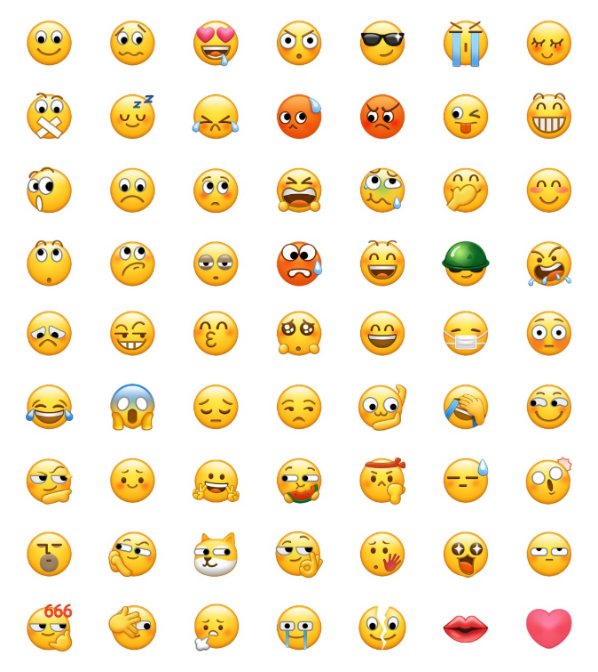 ’ and ‘
’ and ‘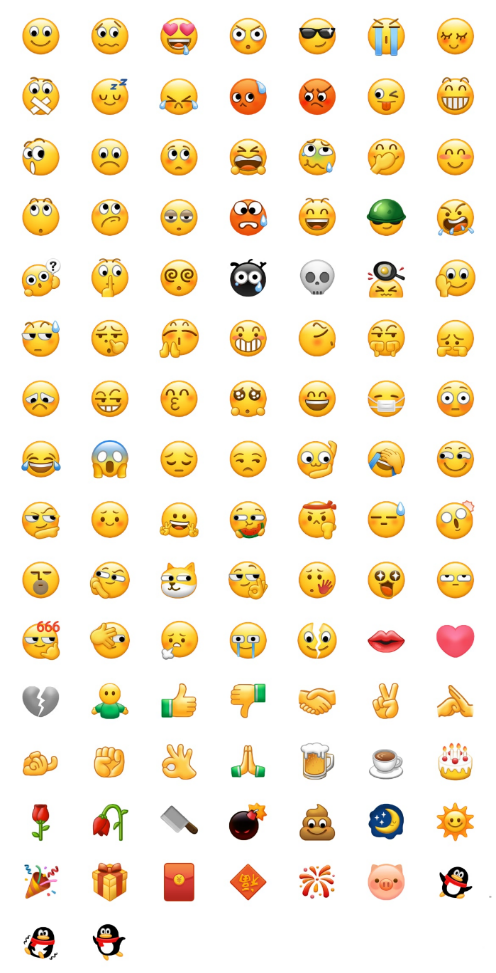 ’.
’.
Table 1: Questionnaire of WeChat emoji usage status.
Age | Emojis | Emoji definition | Question | Answer |
Under 30 [ ] 30-60 [ ] Over 60 [ ] |
| Smile | Do you often use this sticker? | Yes[ ] No[ ] |
In what scenarios would you use this sticker? | ||||
What do you think this emoji sticker? | Positive [ ] Neutral [ ] Negative [ ] | |||
| Sleep | Do you often use this sticker? | Yes[ ] No[ ] | |
In what scenarios would you use this sticker? | ||||
What do you think this emoji sticker? | Positive [ ] Neutral [ ] Negative [ ] | |||
| shocked | Do you often use this sticker? | Yes[ ] No[ ] | |
In what scenarios would you use this sticker? | ||||
What do you think this emoji sticker? | Positive [ ] Neutral [ ] Negative [ ] | |||
| Bye | Do you often use this sticker? | Yes[ ] No[ ] | |
In what scenarios would you use this sticker? | ||||
What do you think this emoji sticker? | Positive [ ] Neutral [ ] Negative [ ] | |||
| whimper | Do you often use this sticker? | Yes[ ] No[ ] | |
In what scenarios would you use this sticker? | ||||
What do you think this emoji sticker? | Positive [ ] Neutral [ ] Negative [ ] |
Table 2: Results of WeChat emoji frequency of use.
Age | Under 30 | 30-60 | Over 60 | ||
Do you often use this sticker? | |||||
| Yes[3] No[0] | Yes[3] No[0] | Yes[3] No[0] | ||
| Yes[2] No[1] | Yes[3] No[0] | Yes[0] No[3] | ||
| Yes[3] No[0] | Yes[3] No[0] | Yes[3] No[0] | ||
| Yes[2] No[1] | Yes[3] No[0] | Yes[1] No[2] | ||
| Yes[3] No[0] | Yes[3] No[0] | Yes[3] No[0] | ||
Table 3: Results of WeChat emoji scenarios of use.
Age | Under 30 | 30-60 | Over 60 | ||
In what scenarios would you use this sticker? | |||||
(smile) | · Disdain for the other · Feeling speechless · Trying to tell that be offended | · Feeling speech less · Expressing wordless · Expressing speechless | · Expressing friendliness · Means smile to each other · Showing courtesy | ||
(whimper) | · feel sorry for him or her, but actually feel he or she deserves it · Expressing sarcasm · Trying to sound bitter in tone | ·For pretend pitying others · Expressing wordless · Expressing sarcasm | · Feeling pity and sorry for other · Requesting others · Ask for the help of others | ||
(bye) | · Expressing speechless · Want to end a talk quickly · Too embarrassing to want to say goodbye to the world | · Expressing wordless · Expressing wordless · Expressing embarrassed | · Good bye · Good bye · Good bye | ||
(shocked) | · Think there is something wrong with each other · “What’s wrong with you?” · Talking about words and actions that make me confuse | · For expressing confusion · Expressing wordless · Expressing Confusion | · Feeling confused · Expressing Surprise · Expressing Confusion | ||
(sleep) | · So embarrassing that I wish I was dreaming ·When sharing an embarrassing experience · Trying to sleep | · Feel sleepy · Expressing that I’m tired · Saying good night to someone else | · End the chat with a good night · To say good night · Expressing that I’m sleepy | ||
Table 4: Results of understanding of WeChat emoji.
Age | Under 30 | 30-60 | Over 60 | ||
What do you think this emoji sticker? | |||||
| Positive [0] Neutral [0] Negative [3] | Positive [0] Neutral [0] Negative [3] | Positive [3] Neutral [0] Negative [0] | ||
| Positive [0] Neutral [0] Negative [3] | Positive [0] Neutral [0] Negative [3] | Positive [0] Neutral [3] Negative [0] | ||
| Positive [0] Neutral [0] Negative [3] | Positive [0] Neutral [0] Negative [3] | Positive [0] Neutral [3] Negative [0] | ||
| Positive [0] Neutral [0] Negative [3] | Positive [0] Neutral [0] Negative [3] | Positive [0] Neutral [3] Negative [0] | ||
| Positive [0] Neutral [3] Negative [0] | Positive [0] Neutral [3] Negative [0] | Positive [0] Neutral [3] Negative [0] | ||
In contrast, the difference in the use of 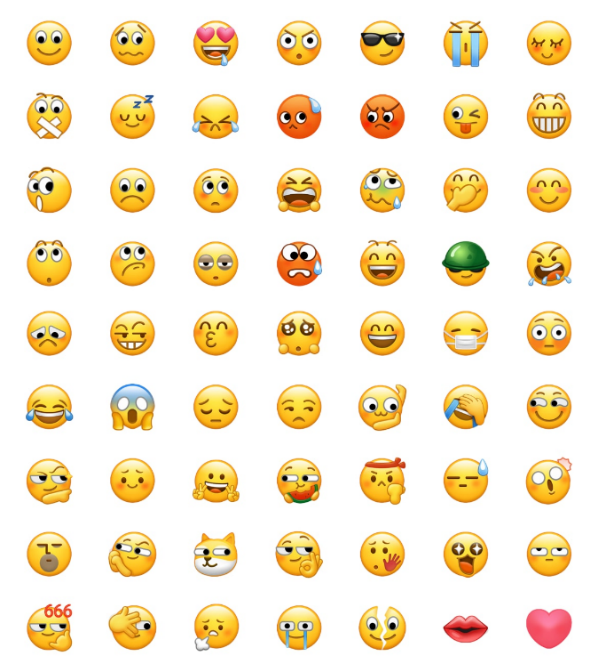 is great between participants under and over 30 years old. Between participants under 60 years old, those who under 30 years old, the use of
is great between participants under and over 30 years old. Between participants under 60 years old, those who under 30 years old, the use of 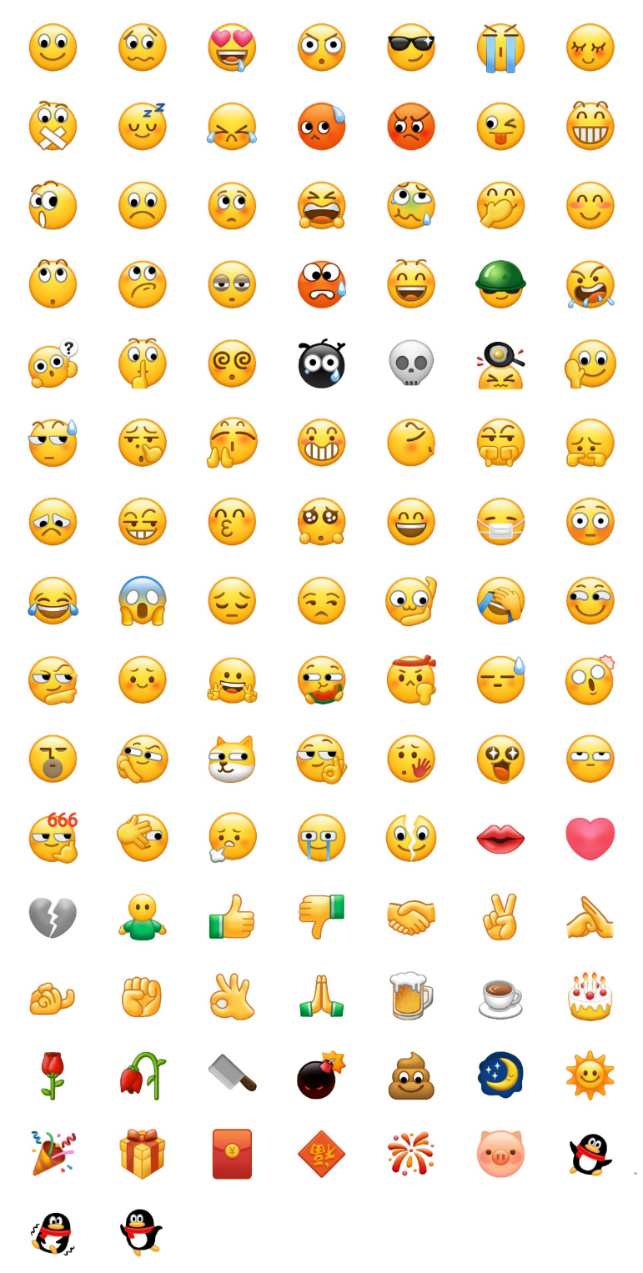 to express emotions was stronger, but not significantly, and differed little from participants over 30 years old in the use of
to express emotions was stronger, but not significantly, and differed little from participants over 30 years old in the use of 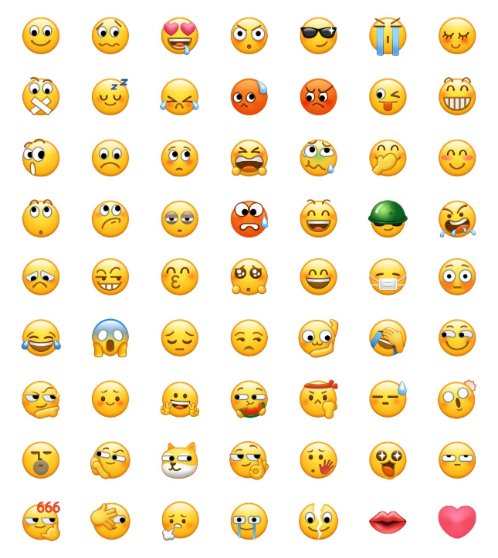 ,
, 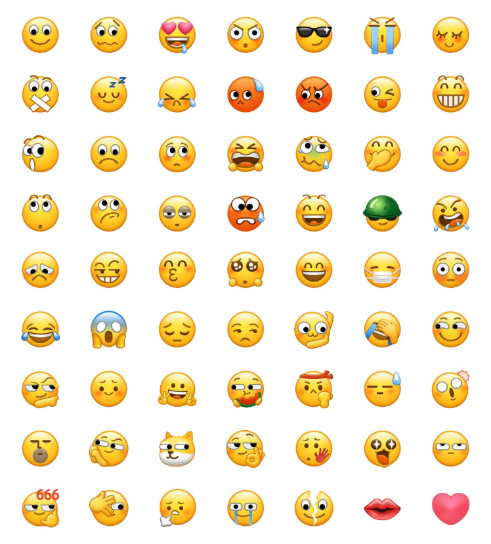 , and
, and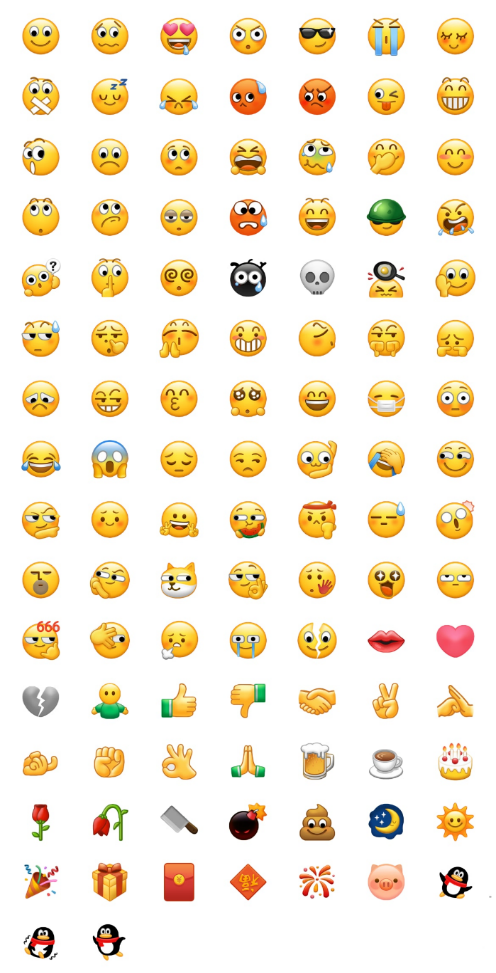 . Participants over 60 years of age differed more from those under 60 years of age in the use of
. Participants over 60 years of age differed more from those under 60 years of age in the use of 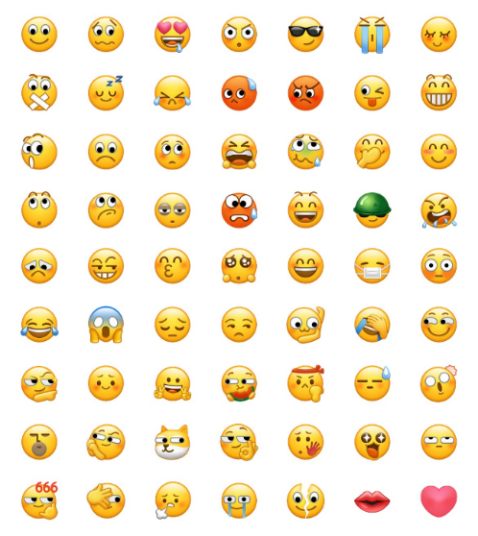 ,
,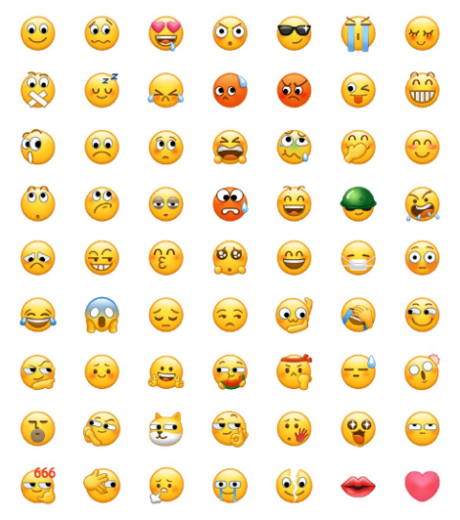 and
and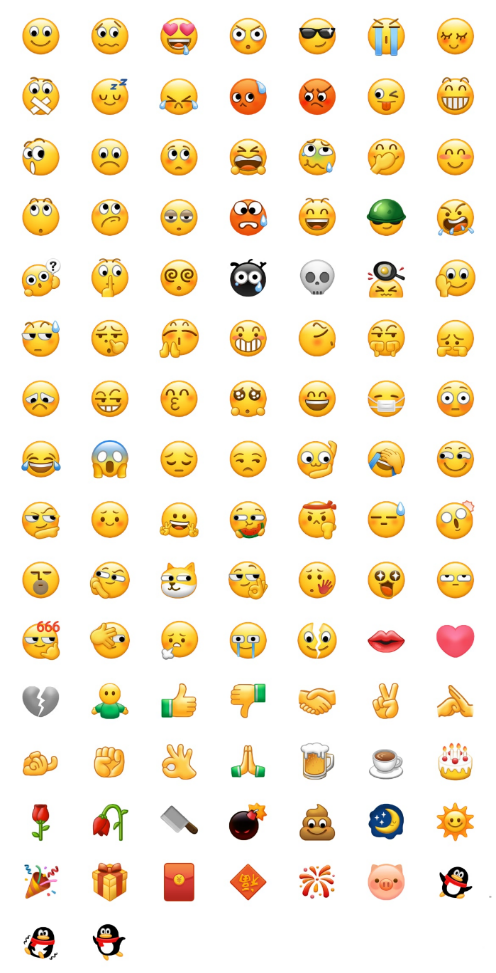 .Although the use of
.Although the use of 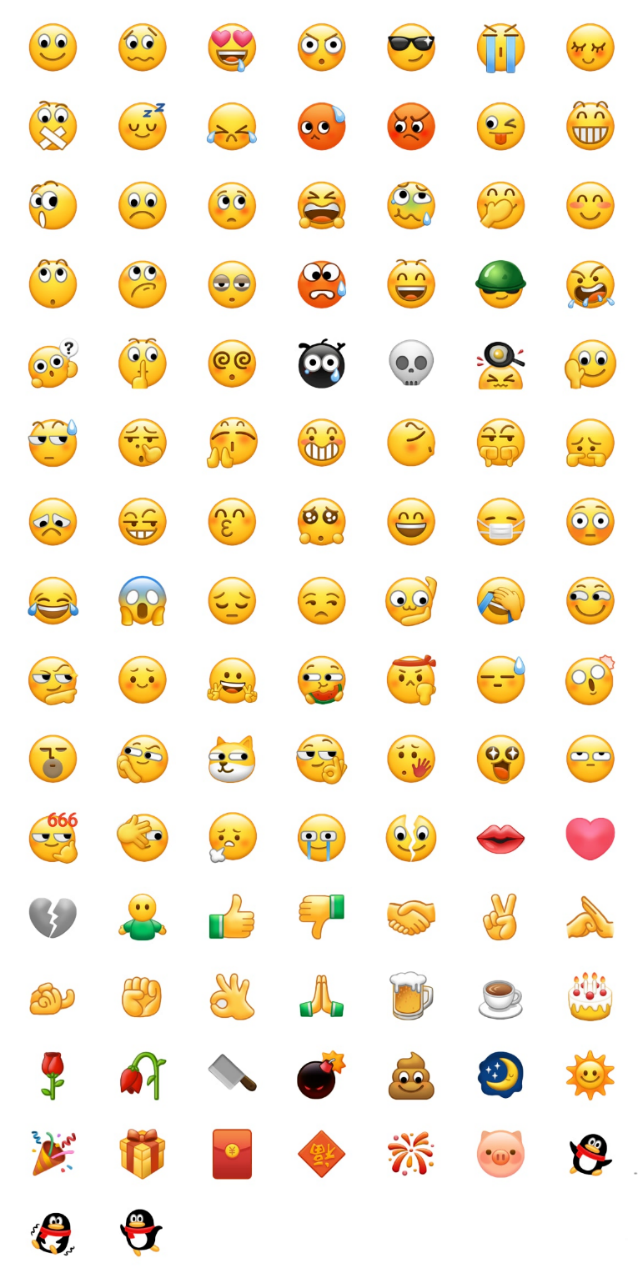 are not significantly different from Table 2, can be seen from Table 3, which shows that the emotional tendencies expressed by the two are different.
are not significantly different from Table 2, can be seen from Table 3, which shows that the emotional tendencies expressed by the two are different.
5. Discussion
Popular opinion in mainstream media suggests that adults over the age of 30 are less likely to use emojis and are unaware of how teens use them [9]. It says that teens have devised "sophisticated Hammurabi social media guidelines to govern their interactions" those adults know nothing about, However, through the survey results, this is not the case.
According to the survey results, the use and understanding of emojis is relatively similar between those aged 30-60 and those under 30. It is the use and understanding of emoji that differs to a greater degree between those over 60 and those under 60, meaning that the age gap in emoji use occurs between those under 60 and those over 60.
The use and understanding of emoji by people over 60 years old is closer to the original meaning of emoji itself, the semantic of emoji used by young people that has changed. From the example of 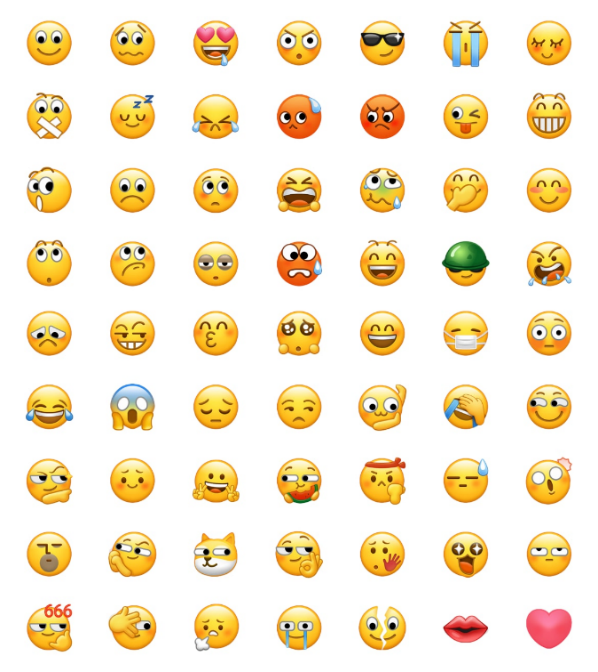 , we can generally see that the change in the meaning of emoji starts with young people under 30 years old, and it takes some time for this change in meaning to become popular among young people before it gradually becomes a commonly used connotation among people under 60 years old. The reason why there is a generation gap in the use of emoji is that people over 60 years old find it difficult to adapt to this change in the meaning of emoji. First, from the physiological and psychological point of view, as the elderly age, their cognitive ability is going downhill, for example, the decline of memory, the lack of attention, and even the reduction of hand-eye coordination, all of which will affect their reception of new information. Secondly, older people have a long social experience and have accumulated many positive or negative experiences, so they have their own subjective attitudes towards objective things, and these subjective attitudes are difficult to be changed by new things, including emoji.
, we can generally see that the change in the meaning of emoji starts with young people under 30 years old, and it takes some time for this change in meaning to become popular among young people before it gradually becomes a commonly used connotation among people under 60 years old. The reason why there is a generation gap in the use of emoji is that people over 60 years old find it difficult to adapt to this change in the meaning of emoji. First, from the physiological and psychological point of view, as the elderly age, their cognitive ability is going downhill, for example, the decline of memory, the lack of attention, and even the reduction of hand-eye coordination, all of which will affect their reception of new information. Secondly, older people have a long social experience and have accumulated many positive or negative experiences, so they have their own subjective attitudes towards objective things, and these subjective attitudes are difficult to be changed by new things, including emoji.
6. Conclusion
In basic agreement with social stereotypes and expectations, the change in the meaning of emoji has been largely led by young people, and the use of emoji by older people has been unaffected by this change. However, middle-aged people aged 30-60 performed differently than expected in this survey, reflecting a good acceptance of the change in the meaning of emoji.
Interestingly, the five emoji meaning changes in the survey were largely from positive or neutral meanings to negative ones. This may reflect some patterns of word changes, or the psychological state of contemporary people.
References
[1]. Herring S C, Dainas A R. Gender and age influences on interpretation of emoji functions[J]. ACM Transactions on Social Computing, 2020, 3(2): 1-26.
[2]. Miller Hillberg H, Levonian Z, Kluver D, et al. What i see is what you don't get: The effects of (not) seeing emoji rendering differences across platforms[J]. Proceedings of the ACM on Human-Computer Interaction, 2018, 2(CSCW): 1-24.
[3]. Hannah Jean Miller, Daniel Kluver, Jacob Thebault-Spieker, Loren G. Terveen, and Brent J. Hecht. 2017. Understanding emoji ambiguity in context: The role of text in emoji-related miscommunication. In Proceedings of the International Conference on Web and Social Media (ICWSM’17). AAAI Press. 152–161.
[4]. Hannah Jean Miller, Jacob Thebault-Spieker, Shuo Chang, Isaac Johnson, Loren Terveen, and Brent Hecht. 2016. Blissfully happy or ready to fight: Varying interpretations of emoji. In Proceedings of the International Conference on Web and Social Media (ICWSM’16). AAAI Press. Retrieved from
[5]. Alecia Wolf. 2000. Emotional expression online: Gender differences in emoticon use. CyberPsychol. Behav. 3, 5 (2000), 827–833.
[6]. Marília Prada, David L. Rodrigues, Margarida V. Garrido, Diniz Lopes, Bernardo Cavalheiro, and Rui Gaspar. 2018. Motives, frequency and attitudes toward emoji and emoticon use. Telemat. Inform. 35, 7 (2018), 1925–1934.
[7]. Anna Oleszkiewicz, Maciej Karwowski, Katarzyna Pisanski, Piotr Sorokowski, Boaz Sobrado, and Agnieszka Sorokowska. 2017. Who uses emoticons? Data from 86,702 Facebook users. Personal. Indiv. Diff. 119 (2017), 289–295
[8]. Emogi Research Team. 2016. 2016 Emoji Report. Retrieved from https://cdn.emogi.com/docs/reports/2016_emoji_report.pdf
[9]. Katy Waldman. 2016. How do Olds use emoji? Incorrectly, according to Wired. Slate. Retrieved from https://www.theguardian.com/commentisfree/2014/jun/18/adults-emoji-grow-up-emoticons-teenagers
[10]. Weiß M, Bille D, Rodrigues J, et al. Age-related differences in emoji evaluation[J]. Experimental Aging Research, 2020, 46(5): 416-432.
[11]. Sara Jaeger, Yixun Xia, Pui-Yee Lee, Denise C. Hunter, Michelle K. Beresford, and Gastón Ares. 2017. Emoji questionnaires can be used with a range of population segments: Findings relating to age, gender, and frequency of emoji/emoticon use. Food Qual. Pref.
Cite this article
Wang,S. (2023). The Variation of the Meaning of Emojis Taking WeChat’s stickers as an Example. Lecture Notes in Education Psychology and Public Media,3,1147-1151.
Data availability
The datasets used and/or analyzed during the current study will be available from the authors upon reasonable request.
Disclaimer/Publisher's Note
The statements, opinions and data contained in all publications are solely those of the individual author(s) and contributor(s) and not of EWA Publishing and/or the editor(s). EWA Publishing and/or the editor(s) disclaim responsibility for any injury to people or property resulting from any ideas, methods, instructions or products referred to in the content.
About volume
Volume title: Proceedings of the 3rd International Conference on Educational Innovation and Philosophical Inquiries (ICEIPI 2022), Part II
© 2024 by the author(s). Licensee EWA Publishing, Oxford, UK. This article is an open access article distributed under the terms and
conditions of the Creative Commons Attribution (CC BY) license. Authors who
publish this series agree to the following terms:
1. Authors retain copyright and grant the series right of first publication with the work simultaneously licensed under a Creative Commons
Attribution License that allows others to share the work with an acknowledgment of the work's authorship and initial publication in this
series.
2. Authors are able to enter into separate, additional contractual arrangements for the non-exclusive distribution of the series's published
version of the work (e.g., post it to an institutional repository or publish it in a book), with an acknowledgment of its initial
publication in this series.
3. Authors are permitted and encouraged to post their work online (e.g., in institutional repositories or on their website) prior to and
during the submission process, as it can lead to productive exchanges, as well as earlier and greater citation of published work (See
Open access policy for details).
References
[1]. Herring S C, Dainas A R. Gender and age influences on interpretation of emoji functions[J]. ACM Transactions on Social Computing, 2020, 3(2): 1-26.
[2]. Miller Hillberg H, Levonian Z, Kluver D, et al. What i see is what you don't get: The effects of (not) seeing emoji rendering differences across platforms[J]. Proceedings of the ACM on Human-Computer Interaction, 2018, 2(CSCW): 1-24.
[3]. Hannah Jean Miller, Daniel Kluver, Jacob Thebault-Spieker, Loren G. Terveen, and Brent J. Hecht. 2017. Understanding emoji ambiguity in context: The role of text in emoji-related miscommunication. In Proceedings of the International Conference on Web and Social Media (ICWSM’17). AAAI Press. 152–161.
[4]. Hannah Jean Miller, Jacob Thebault-Spieker, Shuo Chang, Isaac Johnson, Loren Terveen, and Brent Hecht. 2016. Blissfully happy or ready to fight: Varying interpretations of emoji. In Proceedings of the International Conference on Web and Social Media (ICWSM’16). AAAI Press. Retrieved from
[5]. Alecia Wolf. 2000. Emotional expression online: Gender differences in emoticon use. CyberPsychol. Behav. 3, 5 (2000), 827–833.
[6]. Marília Prada, David L. Rodrigues, Margarida V. Garrido, Diniz Lopes, Bernardo Cavalheiro, and Rui Gaspar. 2018. Motives, frequency and attitudes toward emoji and emoticon use. Telemat. Inform. 35, 7 (2018), 1925–1934.
[7]. Anna Oleszkiewicz, Maciej Karwowski, Katarzyna Pisanski, Piotr Sorokowski, Boaz Sobrado, and Agnieszka Sorokowska. 2017. Who uses emoticons? Data from 86,702 Facebook users. Personal. Indiv. Diff. 119 (2017), 289–295
[8]. Emogi Research Team. 2016. 2016 Emoji Report. Retrieved from https://cdn.emogi.com/docs/reports/2016_emoji_report.pdf
[9]. Katy Waldman. 2016. How do Olds use emoji? Incorrectly, according to Wired. Slate. Retrieved from https://www.theguardian.com/commentisfree/2014/jun/18/adults-emoji-grow-up-emoticons-teenagers
[10]. Weiß M, Bille D, Rodrigues J, et al. Age-related differences in emoji evaluation[J]. Experimental Aging Research, 2020, 46(5): 416-432.
[11]. Sara Jaeger, Yixun Xia, Pui-Yee Lee, Denise C. Hunter, Michelle K. Beresford, and Gastón Ares. 2017. Emoji questionnaires can be used with a range of population segments: Findings relating to age, gender, and frequency of emoji/emoticon use. Food Qual. Pref.










